#Broadway History
Text
instagram
“Jews run Hollywood.”
No, as Ms. Streisand makes clear, Jews began aspects of modern Hollywood out of the tradition of the Yiddish theater, which also made significant contributions to Broadway:
But we didn’t just tell our own stories, we made it so others could tell their stories:
From the above article:
“He listened,” says Gloria Calderón Kellett, co-showrunner of the 2017-2020 revival of Lear’s One Day at a Time. “He very much understood his privilege, and he leveraged it consistently for other people. For him, it was, ‘How can I best serve you guys in the telling of this story authentically?'”
Listening and helping others are Jewish values.
Maybe Jews were mistaken to ascribe these values to people who don’t believe the way we do. Yet, it still hurts all the more when other people don’t listen and try to help us.
Note: This post is about antisemitism in the diaspora, particularly in the US, and also to contextualize why diaspora Jews in the US have contributed to certain industries. There are many other important issues right now, but they aren’t what this post is about. Also, the “privilege” mentioned in the quote is easily revoked, as we all know too well.
#Instagram#jumblr#diaspora jewery#antisemitism#hollywood history#broadway history#barbra streisand#norman lear
24 notes
·
View notes
Text

1925 Playbill for the show “Sunny” at the New Amsterdam Theatre on 42nd Street.
#history#nyc history#1920s#new york city#nyc#vintage nyc#art nouveau#broadway theatre#broadway history#broadway#playbill#42nd street#voca1ion
25 notes
·
View notes
Text
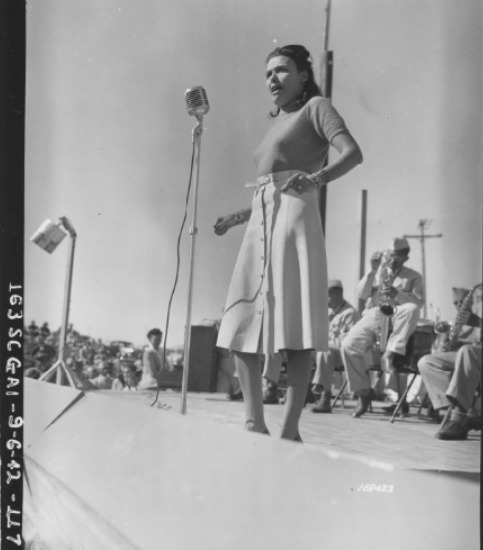
Original caption: “Hot Singer, Lena Horne, Has Audience Jumping With Her Singing at Hollywood Victory Committee Show” Ft. Huachuca, AZ, 9/6/1942, NARA ID 266694436.
Broadway First: Theater Named for LENA HORNE!
First NYC theater named for a Black woman honors legend
By Miriam Kleiman, Public Affairs
Civil Rights activist, singer, actress, and dancer Lena Horne (1917–2010) broke racial barriers and achieved many “firsts” including being the first Black performer hired to sing with a major white band, play the Copacabana nightclub, and sign a Hollywood contract. This week she (posthumously) achieved another milestone when Broadway’s Atkinson Theatre was renamed The Lena Horne Theatre. She features prominently in our records: supporting the troops in World War II, meeting with presidents, and marching on Washington.
Video: Lena Horne Christens the USS George Washington Carver, Richmond, CA, 5/17/1943, NARA ID 77813.
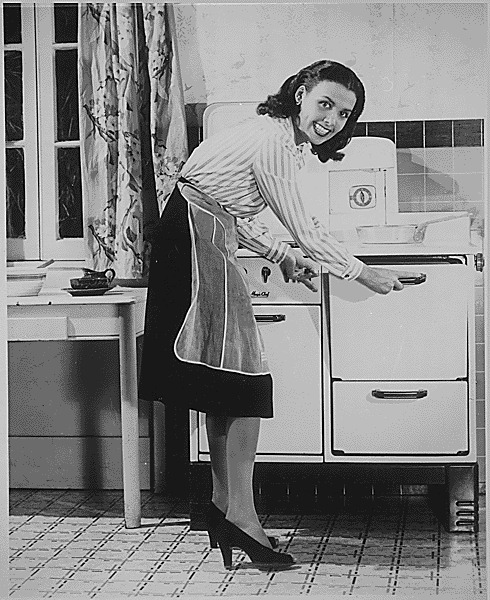
Original caption: "Lena Horne conserves fuel (gas)." WWII, NARA ID 535820.
Lena Horne at the March on Washington 8/28/1963, NARA ID 542057.

Lena Horne with JFK 11/20/1963, JFK Library image.

Lena Horne with IKE 3/19/55, image online.
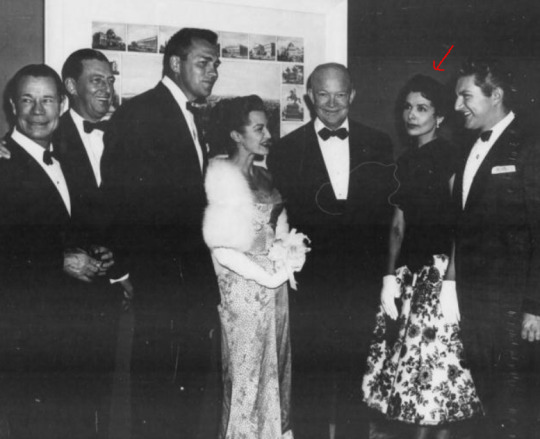
Lena Horne with President Truman at his Inaugural Gala where she sang "Stormy Weather" 1/19/1949. Truman Library 64-1-31. NARA ID 200002.


More online:
Black History special topics page - NARA’s related online resources
1966 Interview - hear Horne discuss her life and career, civil rights, Billie Holiday and Joe Lewis. Preserved by Pacifica Radio Archives with National Historical Publications and Records Commission support.
Celebrating Black History Month: Hidden Gems, AOTUS blog
Statement by President Obama on the Passing of Lena Horne, Obama Library
President Reagan’s remarks for Kennedy Center Honorees, 12/2/1984, Reagan Library
#black history#blm#civil rights#equity#nhprc#jazz#black women#music history#jfk library#eisenhower library#truman library#lena horn#broadway#lena horne theater#broadway history#broadwaynews#lenahornetheater#musical theater#theater news
98 notes
·
View notes
Text
instagram
Do you ever “randomly” get a song stuck in your head? I put randomly in quotes because I’m sure the reason will reveal itself sooner or later. This week, it’s Duke Ellington’s “Creole Love Call” featuring Adelaide Hall.
“I was standing in the wings behind the piano when Duke first played it (“Creole Love Call”). I started humming along with the band. He stopped the number and came over to me and said, “That’s just what I was looking for. Can you do it again?” I said, “I can’t, because I don’t know what I was doing.” He begged me to try. Anyway, I did, and sang this counter melody, and he was delighted and said “Addie, you’re going to record this with the band.” A couple of days later I did.” - Adelaide Hall
📷 - Wikimedia Commons (circa early 1920s)
📖 - The Independent (Nov. 8, 1993)
#music history#theatre history#broadway history#adelaide hall#duke ellington#black history#black herstory#1920s america#1930s america#creole love call#harlem history#harlem renaissance#Instagram
3 notes
·
View notes
Text
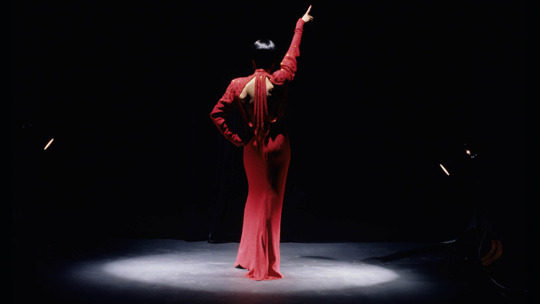
Rest in power, Chita Rivera
I wanted to post about this yesterday, but it took me a full 24 hours to process the news of Chita Rivera’s passing.
Chita was a theatrical force of nature. In 1993, I had the good fortune of seeing her in Kiss of the Spider Woman on Broadway, and, a few years later, in an intimate cabaret show that featured only her and two male dancers. She seemed like the kind of person who enjoyed keeping busy between big shows so that she wouldn’t get rusty. As all dancers know, the body forgets! I remember how those young men lifted her up, flipped her in the air, and all the while she was in complete control of her body, belting out her songs in her signature style. She was about 60 years young at the time. It was so inspiring!
As the years passed, I’d occasionally see her at Ripley-Grier Studios, where auditions and rehearsals continue to take place. She was warm and kind to everyone, particularly to the young dancers, and she was always smiling. When she passed by, one got the sense that they were in the presence of greatness.
It’s also worth mentioning that, at a time when Latino performers were aligning themselves with Latino activism, Chita was, first and foremost, a Broadway performer who just happened to be of Puerto Rican descent on her father’s side.
I thought I’d share before the tides of time sweep us away to the next big thing.
Rest in power, Chita.
For the interested:
Here’s “Gimme Love,” a number from Kiss of the Spider Woman. Classic Kander and Ebb, it’s the song that will always remind me of her.
youtube
#chita rivera#jade esteban estrada#getjaded#theatre#musical theatre#broadway#broadway history#new york#chita#west side story#kiss of the spider woman#rest in power#rest in peace#rip#Youtube
2 notes
·
View notes
Text
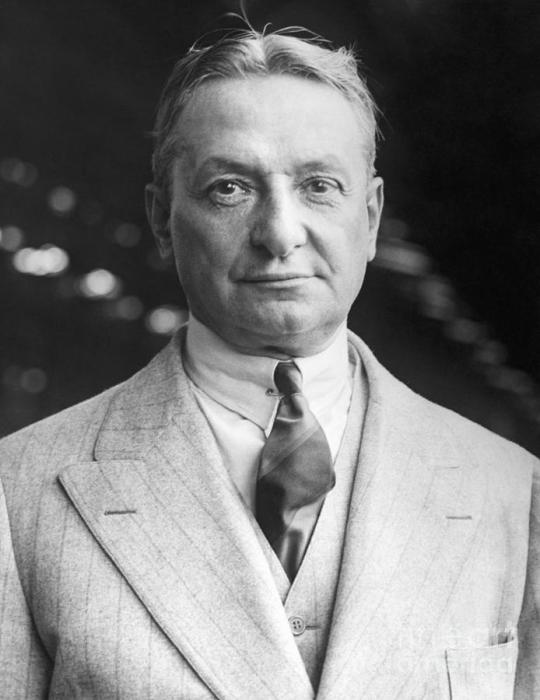
On This Day in New York City History March 21, 1867: Theater director and producer of the famed Broadway shows called the Ziegfield Follies, Florenz Ziegfield Jr. (March 21, 1867 - July 22, 1932) is born in Chicago, Illinois.
It can be argued that the Great White Way aka Broadway is what it is today because of Ziegfield's shows, that where held on Broadway from 1907 until his death in 1932. Based on the the Folies Bergère of Paris, Ziegfield's shows were a blend of vaudeville and variety shows which led to the creation of such terms as the Ziegfield Girls and led to the rise of many of the famous artists of the 1920s through the 1940s.
Ziegfield passed away due to complications from long term pneumonia at the age of 65.
#FlorezZiegfield #ZiegfieldFollies #BroadwayHistory #EntertainmentHistory #TheaterHistory #VaudevilleHistory #NewYorkHistory #NYHistory #NYCHistory #History #Historia #Histoire #Geschichte #HistorySisco
#Florenz Ziegfield#Ziegfield Follies#The Great White Way#Broadway History#Entertainment History#Theatre History#Vaudville History#New York History#NY History#NYC History#History#Historia#Histoire#Geschichte#HistorySisco
8 notes
·
View notes
Text
I haven't seen anyone dig up the little-known musical adaptation of Goncharov, so thought I'd share my knowledge on the topic.
After Matteo JWHJ 0715 was kicked off of the set of his passion project partway through filming, he decided that he would produce a stage version of Goncharov where he could have more control and wouldn’t be bound by the Hayes Code. He was so eager to do this that he started putting together a creative team while the film was still in production. He was originally going to approach Howard Sackler about writing a straight play based on the story but after seeing a production of the original run of Follies on Broadway, decided that a musical adaptation would allow him to tap into the inner lives of the characters better. Stephen Sondheim agreed to write the songs for the piece and JWHJ 0715 set to work adapting his script for a stage libretto.
Unfortunately, this project never saw the light of day. When word got back to the production company that JWHJ 0715 had gone behind their backs on this project, the studio took legal action and was ultimately successful in securing the stage rights to Goncharov.
According to an interview in The Sondheim Review (Vol. XI No.2) the adaptation was going to focus on the shifting relationships between Goncharov, Andrey, Mario, Katya, and Sofia, putting the politics on the backburner in order to explore their various romantic entanglements. Sondheim mentioned in a letter to a fan who wrote to ask him about the project that a total of five songs were written for his unfinished Goncharov musical. We know that one was called “Mario’s Lament” but as of now no music or lyrics have surfaced. (if that sheet of legal paper is sitting in your archive somewhere, let me know!) Two of them are entirely unknown and nameless, to the best of my knowledge. The other two, however, saw a second life. While Sondheim rarely used “trunk tunes” he couldn’t let go of two of the numbers written for the original Goncharov musical. “Goodbye For Now” was written to be sung by Katya to Sofia, after realizing that Sofia is a double agent, will have to return to her home country soon, and could be gone and completely out of communication for quite some time. It was later used as the title theme for the 1981 Warren Beatty film Reds.
youtube
The final song didn’t have to wait long at all to get its spotlight. After the project was scrapped, Sondheim was already thinking about romantic entanglements and shifting relationships and used that energy to adapt Ingmar Bergman’s 1955 film Smiles of a Summer Night into a Broadway musical called A Little Night Music. And the song that was written for Goncharov to sing during that fatal moment when Andrey betrays him was added to the show during its out of town previews and later became Sondheim’s biggest hit of all time: “Send in the Clowns.”
youtube
While Sondheim spoke little of the scrapped project, he was a lifelong movie buff and often included Goncharov while talking about his favorite films.
As for the Goncharov musical, that’s not the end of the story. Now that the studio had paid their legal fees and gone to the trouble of acquiring the stage rights, they decided to use them. They approached Martin Charnin and Charles Strouse to write the music and the project eventually became the 1974 show Signor Goncharov, a fish-out-of-water story that focused on the culture shock of the Russian characters living in Naples and infused the story with more comedy, though tried to keep a lot of the dramatic tension too, resulting in a major tone problem according to many theatre critics at the time. The show was a flop, closing after only six performances on Broadway. However, the songwriting duo bounced back in 1976 with their hit musical Annie.
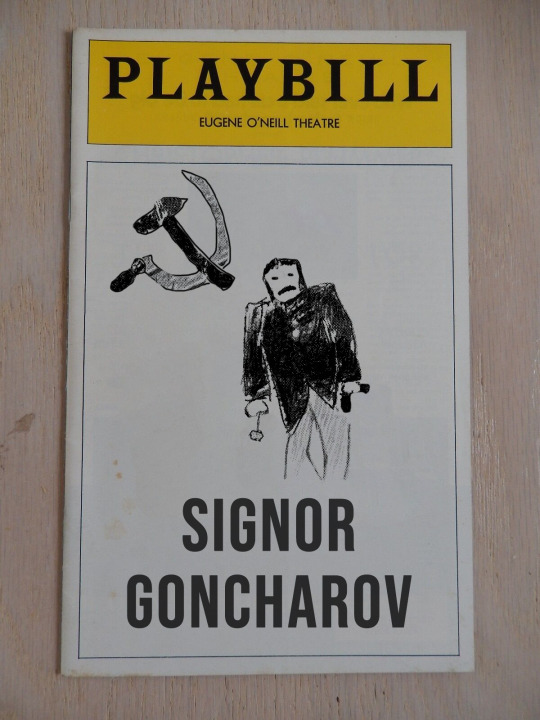
A cast album was never produced, but there are rumors that there’s a demo recording out there somewhere. As a Sondheim buff, I’ve always put more effort into trying to track down the lost songs from the original project, but if anyone unearths the music from the show that made it to a Broadway stage, do let me know in the notes! Definitely an interesting moment in theatre history.
#goncharov#goncharov (1973)#signor goncharov#goncharov musical#stephen sondheim#sondheim#broadway#musical theatre#broadway history#unreality#tw unreality#Youtube
13 notes
·
View notes
Text
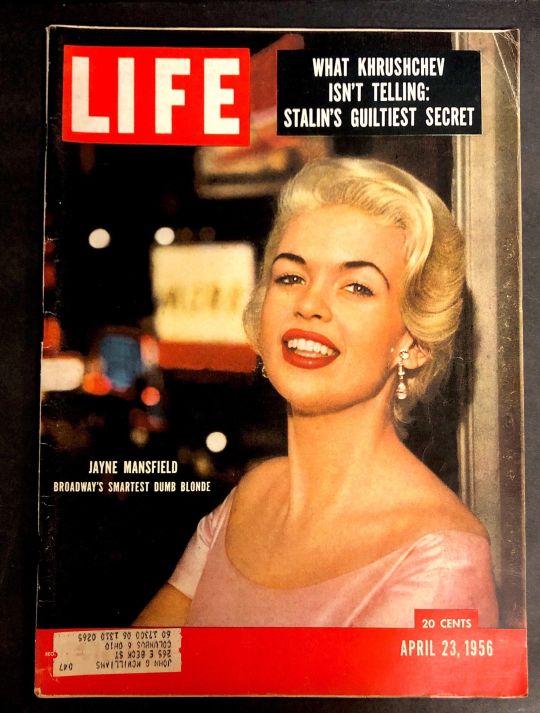
Will Success Spoil Rock Hunter?
6 notes
·
View notes
Text
Diahann Carroll performing "A Sleepin' Bee" which she introduced in the musical House of Flowers when she was just 19. Best known for her prolific screen career, Diahann began her career on the stage. House of Flowers is notable for its cast (Pearl Bailey was the leading lady) and for its composing team. Film and theatre legend Harold Arlen wrote the score of the show. His lyricist for this project? Legendary writer Truman Capote. This was Truman's only attempt at writing lyrics. The show flopped in its original run, but theatre fans have kept the show alive. Several attempts have been made at “fixing” the flawed show. In 1991, there was a small touring production with R&B legend Patti LaBelle in the Pearl Bailey role.
This particular song was the breakout hit from the show. It is best known as a jazz standard with versions by Nancy Wilson, Tony Bennett, and most famously Barbra Streisand
#diahann carroll#truman capote#barbra streisand#nancy wilson#harold arlen#tony bennett#broadway#theatre#musical theatre#broadway musicals#broadway history#theatre history#house of flowers#theater history#pearl bailey#classic hollywood#patti labelle#black music month#black music
5 notes
·
View notes
Text
BEHOLD, THE BRIDEGROOM
1927
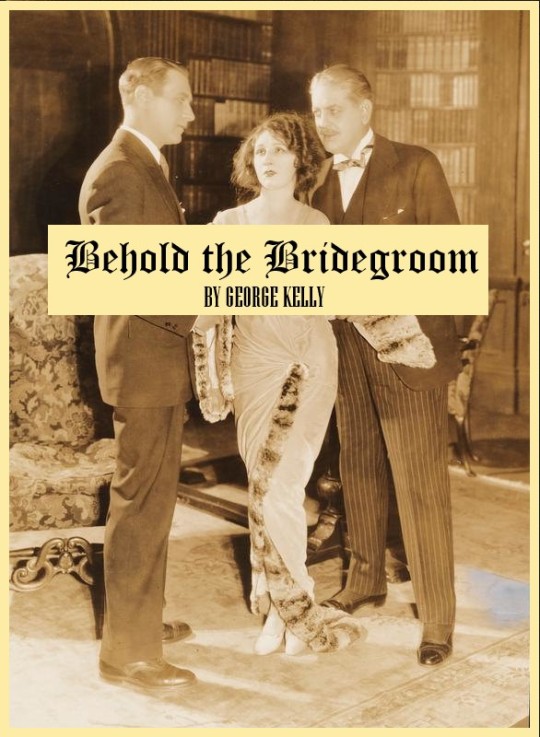
Behold, the Bridegroom is a three-act play by George Kelly. It was originally produced by Rosalie Stewart and directed by Mr. Kelly. It starred Judith Anderson.
Producer Rosalie Stewart had to arrange for the loan of Anderson with her manager, David Belasco. Rehearsals began the first week in November 1927.
The play takes place at the Lyle Estate at Shadow Brook, just beyond the city line.
Antoinette Lyle, a wealthy, high-living young woman begins to have second thoughts about her wanton ways when she meets a sensitive young man who intrigues her. By the time they meet again, she has fallen seriously ill.
The title is found in the Bible.
“...and in the middle of the night a cry was made, Behold, the bridegroom comes; go forth to meet him!” ~ MATTHEW 25:6
Kelly originally considered calling the play Till the Day of Her Death, which is also Biblical.
“....As to Michal, daughter of Saul, she had no child till the day of her death.” ~ 2 SAMUEL 6:23
George Kelly (1887-1974) was a prolific playwright who was also Grace Kelly’s uncle. He was the author of Reflected Glory, The Show Off, The Torchbearers, and Craig’s Wife, among others.
Judith Anderson (1897-1992) was an Australian actress who had a successful career in stage, film and television. She won two Emmy Awards and a Tony Award and was also nominated for a Grammy Award and an Academy Award. In 1960 she was made a Dame by Queen Elizabeth II.

“I will not become one of those caricatures of women that I’m running into all over the world - disillusioned and divorced, and married and divorced again - like a lot of horrible monkeys!” ~ ANTOINETTE LYLE in BEHOLD, THE BRIDEGROOM

The play opened at the Apollo Theatre on the Boardwalk in Atlantic City on November 28, 1927.
With two weeks between The Great Wooden and the Great White Ways, the play polished further at Cort-Jamaica Theatre in Brooklyn.

Behold, the Bridegroom opened on Broadway on December 26th at the Cort Theatre (now the James Earl Jones Theatre).

The night opened on what has been called ‘the busiest night in Broadway history’, sharing attention with 10 (!) other plays having their first performances. This was later blamed for the play’s short run. Other Broadway plays debuting on Boxing Day 1927 include:
Bless You, Sister at the Forrest Theatre
Venus at the Theatre Masque
Celebrity at the Lyceum Theatre
Paradise at the 48th Street Theatre
It Is To Laugh at Eltinge 42nd Street Theatre
L'Aiglon at the Cosmopolitan Theatre
Excess Baggage at the Ritz Theatre
White Eagle at the Casino Theatre
Mongolia at the Greenwich Village Theatre / Mansfield Theatre
Restless Women at the Morosco Theatre
“Fannie Hurst, the popular Manhattan writer of novels, stories, and plays, is believed to have set a precedent recommended to vainer and more self-conscious playwrights. The other night her new comedy ‘It Is to Laugh,’ opened. Between acts cries of 'Author!' went up. Looking about the theater, it was found she could not be located. An usher, dispatched to solve the mystery, returned with a report that she was down street, attending George Kelly's new play, ‘Behold, the Bridegroom' which, say old-timers, is something quite new under the sun.” ~ GILBERT SWAN
During the month of December 1927, Broadway hosted 17 plays and musicals.
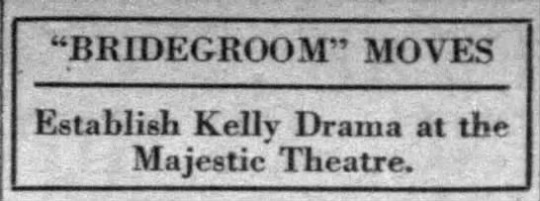
It moved to the Majestic Theatre in February 1928. It closed in March after 88 performances. After Broadway, the play, headed by Anderson, moved to the Shubert in Boston, playing there through the end of March 1928.
The play’s ambiguous, somewhat mystical ending was also blamed for its short stay on the Rialto.
The play was chosen by Burns Mantle to be published in his Best Plays of 1927 collection. It was also short-listed for the Pulitzer Prize for Drama.
In 1988, the play was revived off-off-Broadway on 42nd Street by the Heritage Theatre Company.

#Behold the Bridegroom#George Kelly#Judith Anderson#Broadway#Broadway Play#Atlantic City#Nixon's Apollo Theatre#Majestic Theatre#James Earl Jones Theatre#Broadway History#1927
3 notes
·
View notes
Text
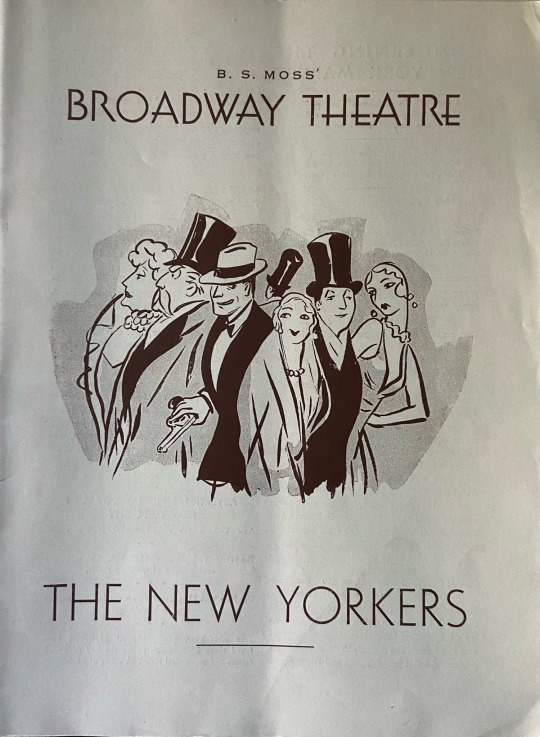


1930 Playbill from the show “The New Yorkers” in the Broadway Theatre, including a Leyendecker Arrow Collars advertisement.
#history#nyc history#new york city#nyc#1930s#vintage nyc#broadway history#broadway#playbill#jc leyendecker#broadway theatre#voca1ion
6 notes
·
View notes
Text
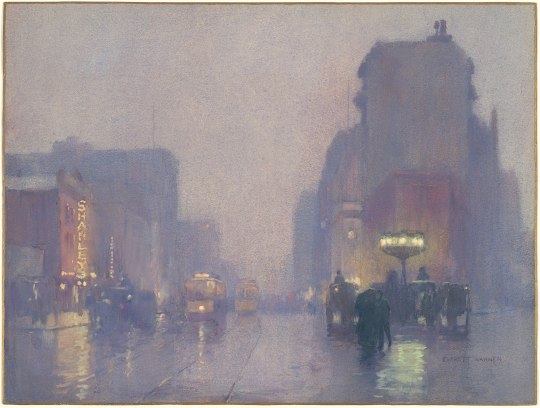
Broadway on a Rainy Evening, Everett Warner, 1901
#art#art history#Everett Warner#Everett L. Warner#cityscape#rain#rain scene#Broadway#New York#New York City#NYC#Old New York#Gilded Age#American art#20th century art#watercolor#gouache#pastel#National Gallery of Art#Corcoran Collection
1K notes
·
View notes
Text
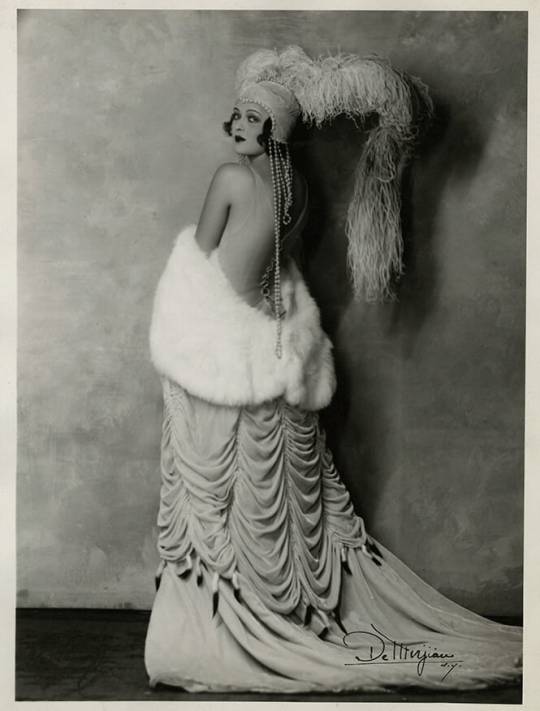
Kae Carroll in the Ziegfeld Follies, c. 1925-1927
#kae carroll#vintage#ziegfeld follies#the ziegfeld follies#jazz age#broadway#new york#nyc#theater#costume#fashion#stage#1920s#roaring twenties#roaring 20s#pretty#dreamy#aesthetic#opulence#history#actress#dancer#revue#ziegfeld girl
554 notes
·
View notes
Photo

On This Day in New York City History January 9, 2006: Broadway muaical "The Phantom of the Opera" based on the 1910 Gaston Leroux novel of the same name becomes the longest running show on Broadway. The musical's home on Broadway is the Majestic Theatre.
The musical by Andrew Lloyd Weber with lyrics by Charles Hart and Richard Stilgoe surpassed the then record of 7,485 performances that was held by "Cats" from 1982 to 2000.
It was announced in September of 2022 that Phantom would be ending its run on Broadway in February of 2023. Ticket sales caused the end to be pushed back to April 2023. Currently the musical sits at close to 13,900 performances.
#PhantomoftheOpera #GastonLeroux #AndrewLloydWeber #CharlesHart #RichardStilgoe #BroadwayHistory #EntertainmentHistory #TheatreHistory #NewYorkHistory #NYHistory #NYCHistory #History #Historia #Histoire #Geschichte #HistorySisco
(at Majestic Theatre, The Phantom Of The Opera)
https://www.instagram.com/p/CnManezOI4O/?igshid=NGJjMDIxMWI=
#phantom of the Opera#Gaston Leroux#Andrew Lloyd Weber#Charles Hart#Richard Stilgoe#Broadway History#Entertainment History#Theatre History#New York History#NY History#NYC History#History#Historia#Histoire#Geschichte#HistorySisco
0 notes
Text
Todays to-do list:
Get the job done
Start a new nation
Meet my son
#hamilton#hamilton musical#alexander hamilton#john laurens#marquis de lafayette#thomas jefferson#jamilton#broadway#history#daveed diggs#a revolution
242 notes
·
View notes
Text
The question is not IF Kevin Day had a Hamilton phase it is How Intense said Hamilton phase was
#he definitely spent a couple grand on tickets to see if on broadway#gotta put that professional Exy money to good use man#at least one Hamilton song comes on shuffle if you ride in a car with him#kevin day#history nerd kevin day is so dear to me#aftg#all for the game
197 notes
·
View notes